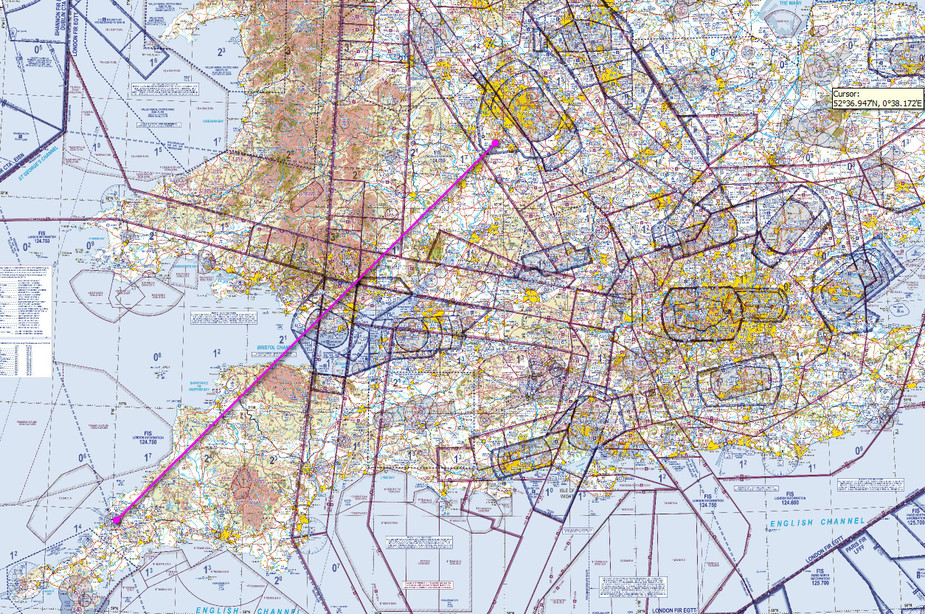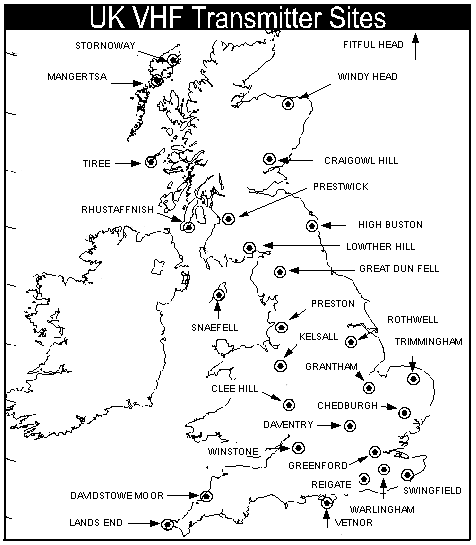Thanks Peter -
I wonder if they use directional yagi type antennas covering sectors or if the actual transceivers are remote and connected back to the ATC unit by leased line type arrangements (or IP/fibre//UHF links etc)
Thanks for the hard work you put in keeping this forum going.
Limited Climax operation has been discussed for years on 8.33 spacing and is feasible:
https://www.icao.int/safety/acp/Inactive%20working%20groups%20library/ACP-WG-C-6/WP633.doc
[ local copy ]
From the above doc:
which is not surprising. It is just not very useful. One wonders how this would work for say 124.60 or 124.75 (London Info) over the largely flat southern UK… the other day I was flying near Birmingham, c. 5000ft, and heard London Info 124.75 talking to somebody near Newquay.

I wonder if they use directional yagi type antennas covering sectors or if the actual transceivers are remote and connected back to the ATC unit by leased line type arrangements (or IP/fibre//UHF links etc)
A good Q… AFAIK it is done with multiple transmitters connected with data links.
Peter wrote:
the other day I was flying near Birmingham, c. 5000ft, and heard London Info 124.75 talking to somebody near Newquay.
Not unusual, I’ve been north of Blackpool while hearing people crossing the English Channel on London Info (if I’m on my way home from Blackpool I usually climb up to 6500, go up the coast to St Bees Head and cross there).
Peter wrote:
So if eg your voice has highest frequency components up to 2kHz (my ex wife could do it easily) then a 125.000 carrier will move between 124.998 and 125.002MHz.
Picking nits here, but the carrier doesn’t move (we use AM, not FM). The carrier stays absolutely put (and also contains no information). It’s the sidebands that will grow with increasing audio frequency. Looking at it on a waterfall spectrograph you’ll see the carrier (the strongest frequency component) as a bright line then the sidebands will appear as solid bands either side going from about +-300Hz to about +-2.5kHz on an AM transmission (your voice contains lots of different frequency components).
This is slightly funny but I think you are describing two sides of the same coin. Amplitude modulation does shift the carrier around so that e.g. a 125.000 carrier modulated with 1KHz will shift the carrier about between 124.999MHz and 125.001MHz. When this is viewed on a conventional spectrum analyser, you see the carrier (at a fixed place) and if the modulation is a pure 1kHz i.e. a clean sinewave you will see the two sidebands.

IOW, the transmitter is not transmitting concurrently on the three discrete frequencies of 124.999 125.000 and 125.001.
FM is the same but the frequency deviation is far bigger. In AM, the frequency deviation is just the modulating frequency – as above. In FM, the deviation is much wider – of the order of 10x wider.
8.33khz Climax
My understanding is that ICAO has rejected the implementantion of 8.33khz Climax on the grounds of:
1 Limited spectrum benefit (only 2 leg Climax would work on 8.33 as opposed to up to 5 leg on 25khz).
2 Probable lack of compatibility with early 8.33khz aircraft radios.
There are quite a number of transceivers dotted around the country.
Below is an old map from a book about airband radio but most if not all of the sites are still in use. The map was very comprehensive at the time it was created and shows London and Scottish Control sites also.
London Info uses the following sites:
124.600 East – Chedburgh, Daventry, Reigate, Swingfield, Trimmingham, Warlingham
124.750 West – Clee Hill, Davidstowe Moor, Winstone, Ventnor
125.475 North – Preston, Rothwell, Snaefell

The UK AIP contains a useful map of which frequency to use for a given location:

It has been mentioned here before, that over some parts of the Irish Sea 124.750 is unavailable due to screening of Clee Hill by the Snowdonian mountains (North West Wales). This comes as no surprise upon a brief examination of the map. The North frequency (125.475) works very well in these circumstances for reasons that are also very clear from the map.
And not to leave out our friends at Scottish Information, they use the following sites:
119.875 – Craigowl Hill, Lowther Hill (-7.5kHz offset), Windy Head (+7.5kHz offset)
I have this from an insider:
For those more interested there are apparently some PDFs on the NATS website.
Anyway, the bottom line with regard to 8.33 is that these frequencies are not likely to go to 8.33 since it seems obvious it would not work.
Peter wrote:
IOW, the transmitter is not transmitting concurrently on the three discrete frequencies of 124.999 125.000 and 125.001.
But it is actually transmitting concurrently on the three discrete frequencies, and it can be mathematically proven that this is the case (and physically proven, by filtering out some of the other frequencies – if you put a filter between the modulator and PA that filters out 125.000 and 124.999 (in other words filters the carrier and lower sideband), you’ll still see a discrete signal at 125.001). Similarly, at the receiving end, if you had a very good narrow RF filter, you could select 125.001, where you’d see a continuous pure sinewave, move it to 125.000 where you’d see a continuous pure sinewave (the carrier) about 3 times stronger, and then select 124.999 and you’d see another continuous pure sinewave.